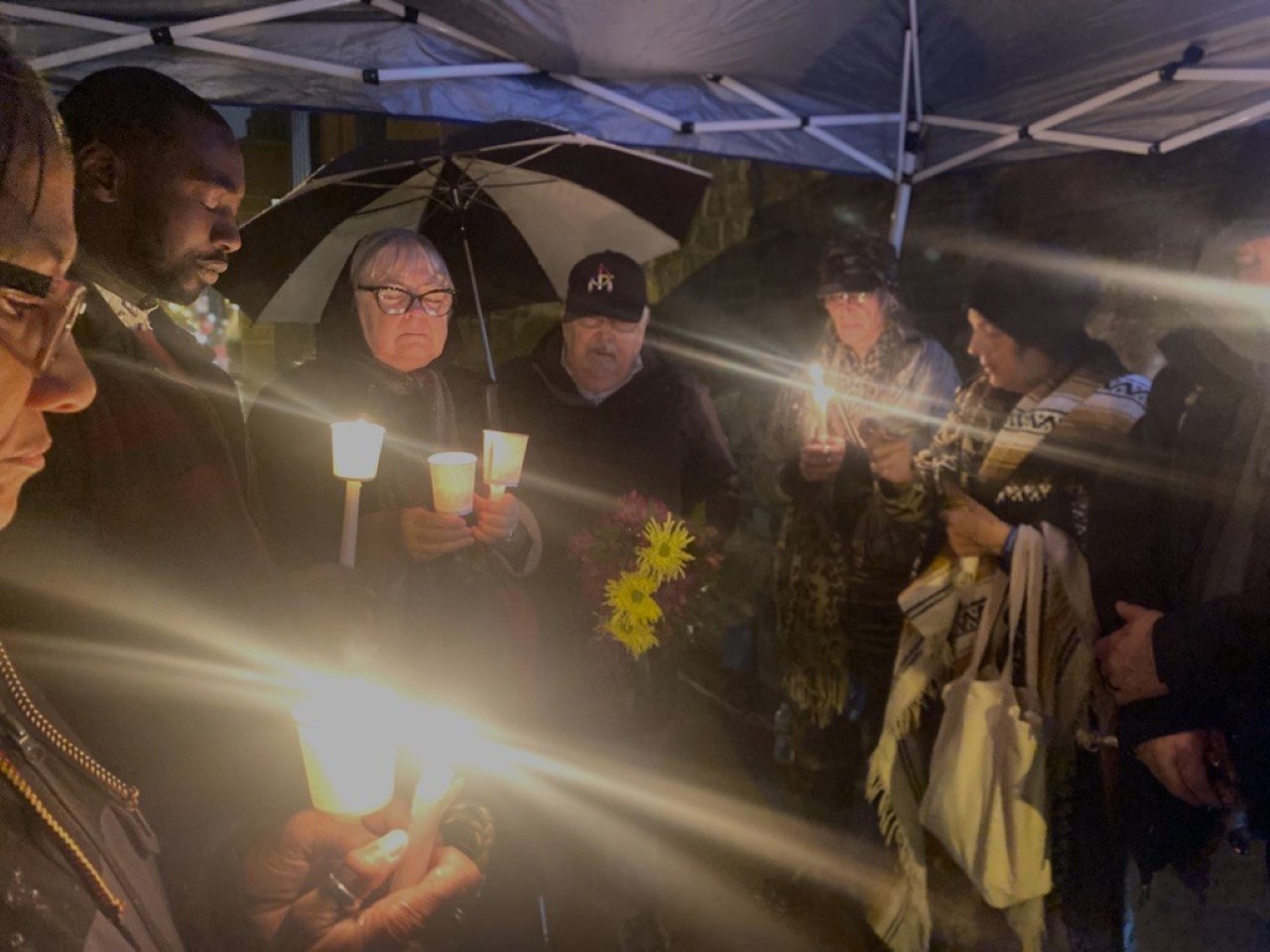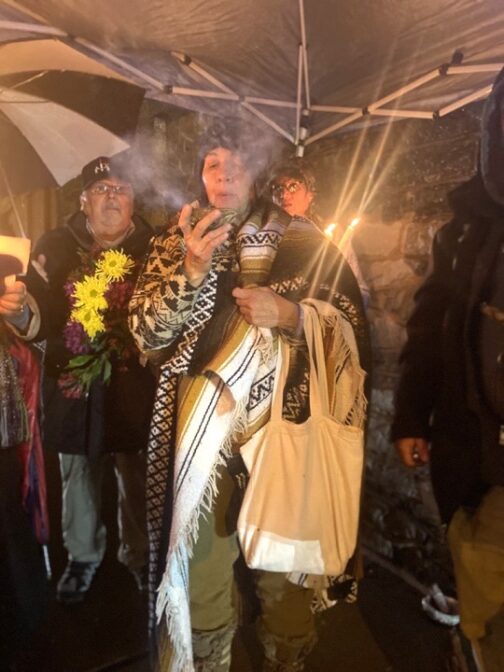
A group of Lancaster residents and advocates for Native American rights held a vigil for the victims of the Conestoga massacre in Lancaster in 1763.
Gabriela Martinez / WITF

A group of Lancaster residents and advocates for Native American rights held a vigil for the victims of the Conestoga massacre in Lancaster in 1763.
Gabriela Martinez / WITF

Gabriela Martinez / WITF
A group of Lancaster residents and advocates for Native American rights held a vigil for the victims of the Conestoga massacre in Lancaster in 1763.
About 10 people gathered behind Fulton Theatre in Lancaster Wednesday to remember the 14 members of the Conestoga tribe who were murdered by a gang of vigilante colonists on Dec. 27, 1763.
They stood under a makeshift canopy under heavy rain, holding candles and burning sage and tobacco to honor the spirits of those killed. Emerson Sampaio, Lancaster resident and director of a community nonprofit, led a prayer.
“Thank you for gathering us behind these walls where many were kept against their will,” Sampaio said. “Thank you for the leadership, storytellers and for this moment.”

Gabriela Martinez / WITF
Vicky Valentive burns sage to honor the victims of the Conestoga massacre in Lancaster in 1763.
Fulton Theater sits on the site of Lancaster’s pre-revolutionary jail. In 1763, a group known as the Paxton Boys raided a Conestoga village in Lancaster, killing all its inhabitants. A remaining group of 14 Conestoga women, children and men sought protection in the county jail, but the Paxton Boys eventually found them and viciously murdered them. According to historical accounts, the gang also mutilated their bodies.
“They did not only scalp them but even after they were dead, they still were cutting and hacking at the children,” said Mary Ann Robins, president of the Circle Legacy Center, a nonprofit dedicated to preserving the Native American heritage in Pennsylvania.
The murderers were never arrested or prosecuted for the killings.
An old stone wall that was once part of the jail’s open-air courtyard – the site where the massacre happened – still exists as the back of Fulton Theatre. Most of the building has been renovated, but a plaque marks the site of the tragedy.
The group has been holding the vigil for about 20 years.
“A very rich history of the indigenous people was here,” said Robins, who is from the Onondaga Nation in New York. “People only know about the Conestogas through William Penn and his words, but to have this atrocity happen right in your own backyard, and not had that told, so that mistakes aren’t made, so it never happens again, and to have students to be able to come here and learn at something that they can still see and feel would be important to me.”
The days of journalism’s one-way street of simply producing stories for the public have long been over. Now, it’s time to find better ways to interact with you and ensure we meet your high standards of what a credible media organization should be.